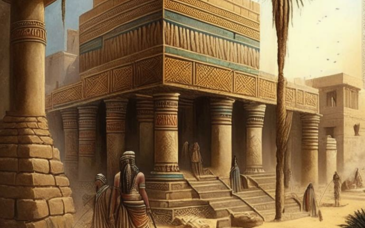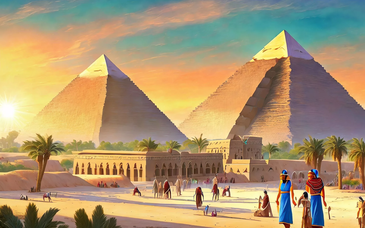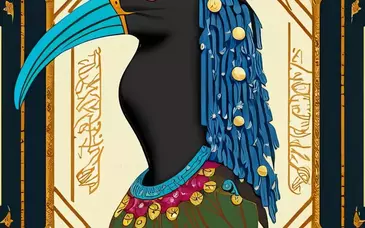Egypt, with its timeless pyramids, enigmatic hieroglyphs, and majestic temples, continues to captivate the world with its mysteries. Join us on an expedition through the sands of time as we unravel the mystique of Egypt, exploring the secrets that lie within the ancient tombs, monuments, and narratives of this extraordinary civilization.
1. The Sphinx's Enigma: The Great Sphinx of Giza, with its lion's body and human head, guards the secrets of Egypt's past. Questions surrounding its construction, purpose, and the lost civilization it might have witnessed continue to fuel speculation and intrigue.
2. Hieroglyphs and the Rosetta Stone: The ancient Egyptians left behind a written legacy in the form of hieroglyphs. The decipherment of these intricate symbols, a feat accomplished through the Rosetta Stone, unlocked the stories of pharaohs, gods, and daily life, providing a key to understanding the mysteries etched into temple walls and tombs.
3. The Pyramids: The colossal pyramids of Giza stand as enduring monuments to the mysteries of ancient engineering and astronomy. How were these architectural marvels constructed, aligned with celestial bodies, and imbued with religious significance? The secrets of the pyramids continue to be a subject of scholarly exploration and debate.
4. The Valley of the Kings: Nestled on the west bank of the Nile, the Valley of the Kings is a necropolis that harbors the tombs of pharaohs and nobles. Each tomb, adorned with intricate paintings and hieroglyphs, tells a unique story of the afterlife and the challenges faced by the deceased on their journey.
5. Curse of the Pharaohs: The concept of the "Curse of the Pharaohs" adds an element of mystery to Egyptology. Legends tell of misfortune befalling those who disturb the resting places of the ancient rulers. While skeptics dismiss it as superstition, the allure of this supposed curse continues to capture the imagination.
6. Temples of Karnak and Luxor: The temples of Karnak and Luxor, with their colossal columns and grand halls, reveal the architectural prowess of the ancient Egyptians. The secrets of religious rituals, divine processions, and the symbolic significance of these monumental structures invite us to step into the sacred spaces where gods and mortals converged.
7. Unraveling Cleopatra's Legacy: Cleopatra, the last pharaoh of Egypt, remains a figure shrouded in mystery and allure. Her political acumen, relationships with Julius Caesar and Mark Antony, and the dramatic end of the Ptolemaic dynasty contribute to the mystique surrounding this iconic queen.
Egypt, with its pyramids, temples, and hieroglyphs, remains an enigmatic tapestry that weaves together the stories of a civilization that thrived along the banks of the Nile. As we embark on this exploration of the mysteries of Egypt, we are reminded that, even in the 21st century, the wonders and secrets of this ancient land continue to beckon us into the depths of history, inviting us to uncover the marvels that lie beneath the sands of time.



